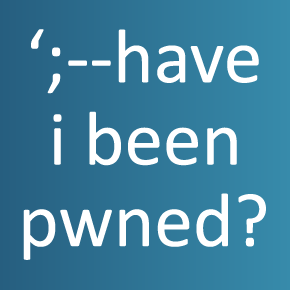CyberAlerts is shutting down on June 30th, 2025. Thank you for your support!
Example Searches:
CVE
Threat Actors
Countries
Vendors
Severity
Known Exploited

|
Description: Ascension Health revealed another security incident this week, warning more than 100,000 people in multiple states that their information was likely accessed by hackers late last year.
May 1st, 2025 (about 1 month ago)
|

|
Description: At Saint James Hospital Group, they have over 25 years of experience in the healthcare sector. It has earned a reputation for excellence and innovation, backed by the latest state-of-the-art technology and staffed by highly-qualified professional personnel.
They are the natural choice when seeking private medical treatment, not simply because they have the experience to meet your expectations, but also because they house the very best in modern technology – and the island’s most renowned consultants and health professionals.
The Saint James Hospital Group became a victim of the data breach. 250Gb sensitive, medical and personal data will be published soon in our blog.
May 1st, 2025 (about 1 month ago)
|

|
Description: Our team managed to breach and encrypt Malaysia Airport Holdings Berhad's network, further read as MAHB.
The network was completely encrypted excluding flight control systems and over 2TB of data leaked from there.
It was a complex IT o ...
May 1st, 2025 (about 1 month ago)
|

|
Description: Enterprise data backup platform Commvault has revealed that an unknown nation-state threat actor breached its Microsoft Azure environment by exploiting CVE-2025-3928 but emphasized there is no evidence of unauthorized data access.
"This activity has affected a small number of customers we have in common with Microsoft, and we are working with those customers to provide assistance," the company
CVSS: HIGH (8.8) EPSS Score: 15.08%
May 1st, 2025 (about 2 months ago)
|

|
Description: In March 2025, almost 55k records were breached from the Hungarian education office website TehetségKapu. The data was subsequently published to a popular hacking forum and included email addresses, names and usernames.
May 1st, 2025 (about 2 months ago)
|

|
Description: Commvault, a leading provider of data protection solutions, says a nation-state threat actor who breached its Azure environment didn't gain access to customer backup data. [...]
April 30th, 2025 (about 2 months ago)
|

|
Description: Ascension, one of the largest private healthcare systems in the United States, is notifying patients that their personal and health information was stolen in a December 2024 data theft attack, which affected a former business partner. [...]
April 30th, 2025 (about 2 months ago)
|

|
Description: Traditional approaches to cloud access rely on static, permanent permissions that are often overprivileged. Learn how just-in-time access completely changes the game.The access challenge in modern cloud environmentsAs cloud adoption accelerates, organizations are grappling with a fundamental security challenge: How do you grant people the access they need — such as on-call developers needing to debug problems, site reliability engineers (SREs) needing to repair issues with infrastructure, or DevOps engineers needing to provision or architect resources — without opening the door to overprivileged accounts and breach risks?Traditional approaches rely heavily on static, permanent permissions. Human users often receive more access than necessary simply because it’s hard to predict specifically which permissions they’ll need. These permissions rarely get revoked, leaving organizations exposed.This is where Tenable Cloud Security changes the game. As a powerful cloud-native application protection platform (CNAPP) solution, Tenable Cloud Security doesn't just identify access-related risk — it actively helps you solve it.In this blog, we explore how you can address the excessive permissions challenge using the just-in-time (JIT) access capability in Tenable Cloud Security.Just-in-time access: The elegant solution to human identity riskJIT access enables organizations to dramatically reduce their exposure from compromised identities by providing a substitute for permanent access. I...
April 30th, 2025 (about 2 months ago)
|

|
Description: Today, the French foreign ministry blamed the APT28 hacking group linked to Russia's military intelligence service (GRU) for targeting or breaching a dozen French entities over the last four years. [...]
April 29th, 2025 (about 2 months ago)
|

|
Description: Nova Scotia Power and its parent company Emera Inc. are actively managing a cybersecurity incident involving unauthorized access to parts of their Canadian IT network. Although some business applications were affected, the companies confirm that critical infrastructure operations remain unaffected. The breach was initially identified by Nova Scotia Power's internal IT team, who immediately activated …
The post Nova Scotia Power Says Cybersecurity Incident Impacting IT Systems appeared first on CyberInsider.
April 29th, 2025 (about 2 months ago)
|
